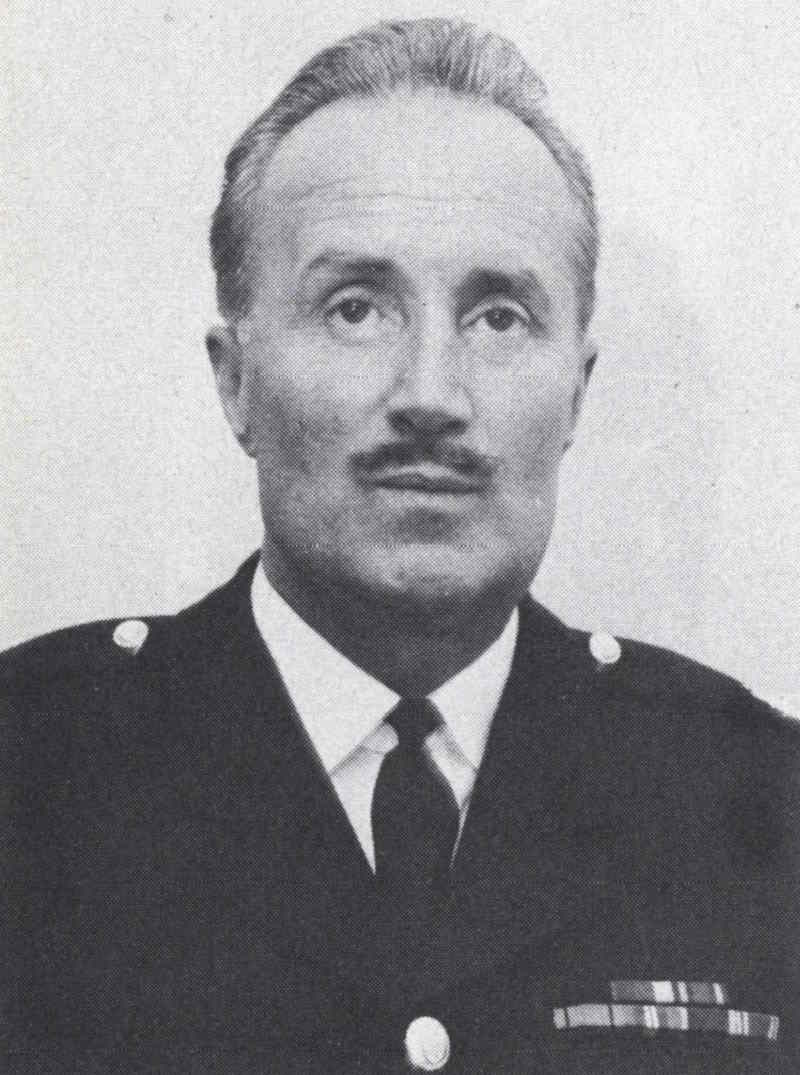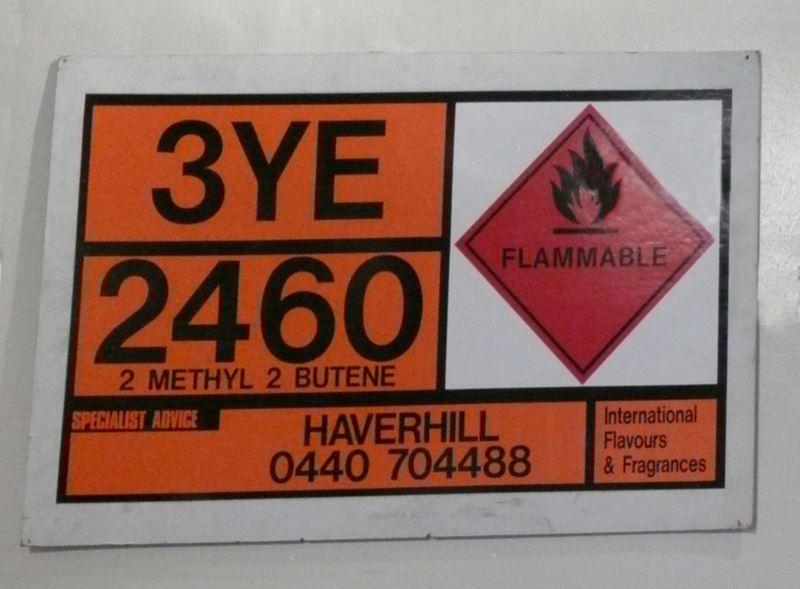Charles Clisby developed the groundbreaking Hazchem Code, which alerted firefighters to hazardous substances, and is still in use today.

Clisby’s fire service career began in 1946 after wartime military service. He had served with the Birmingham and Coventry Brigades before transferring to the Middlesex Fire and Ambulance Service.
Charles Clisby served as a Divisional Officer (DO) of C Division in London Fire Brigade in the 1960s, and by the late 1970s he was Deputy Assistant Chief Officer (DACO).
During the 1970s Clisby was part of the newly formed ‘Technical, Planning and Development Branch’ in a key role in communications, including radio, telephones, closed circuit television broadcasts and control room equipment. He introduced a new paging system for calling senior officers. Discover more about the history of communications in London Fire Brigade.

Following the tragic events of the Dudgeons Wharf explosion in 1969, Senior Officer Charles Clisby devised an innovative practical safety system called the Hazchem Code. The Hazchem code stands for ‘Hazardous chemical code’, it is also known as ‘Emergency action code’.
The Hazchem Code is signage which clearly shows any hazardous substances stored in an area or on a vehicle. Hazard pictograms appear in the shape of a diamond with a distinctive red border and white background. This provides vital information to firefighters or other emergency services personnel on the action to take when dealing with that hazard. So in an accidental fire, spillage or leakage, for example, it tells them whether to dilute the chemical or to contain it. No detailed knowledge of chemistry is needed by the firefighters.
Clisby acted as adviser to the Home Office, the Ministry of Defence, the department of the Environment and the Health and Safety Executive on matters relating to the storage and transport of dangerous goods.
He promoted education on the Hazchem Code via television programmes, which won him the ‘Communicator of the Year’ award from the British Association of Industrial Editors.
Although Clisby is known for his work on Hazchem, and we can probably agree that this was a fantastic achievement, he was also a talented poet. He wrote several creative pieces reflecting on aspects of life as a firefighter. ‘Recruit on the Drill Tower’, likely written in the early 1970s, provides an insight into the potential dangers associated with firefighting, from attending incidents to accidents on the drill tower. Recruits would have worn a belt that would have joined to the hook ladder for safety, with the modern equivalent being a safe working at height harness.
‘Recruit on the Drill Tower’ focuses on the emotions felt by a young firefighter approaching a tricky climb. Feelings of bravery, and then fear give way to a sense of relief at the end when he climbs to the top and waits for the next firefighter to do it. The poem is read by LFB Museum volunteer Murray.
Recruit on the Drill Tower read by museum volunteer Murray.
‘Fireman’s prayer’, another of Clisby's poems, talks about the prayer of firefighters when they are called to duty. Clisby prays for strength to serve and protect by giving his best and fulfilling his calling. The poem ends with the acknowledgment that while out on duty he may lose his life and he prays for the protection of his loved ones.
At the time Clisby’s poetry was published in several editions of London Fire Brigade's internal magazine 'London Fireman' and was also recognised by the BBC, who he was commissioned to write for. A programme featuring his work was broadcast on 29th May 1970 on BBC Radio 4.
Clisby retired from the service in December 1977 due to ill-health. He devoted time after he retired from the Brigade to write poetry and a story of his fire service experiences. He was also interested in writing a book on Byzantine history. Tragically he died in June at his home in Wiltshire just six months after his retirement from the Brigade on 11th June 1978.
Clisby was awarded the Queen's Fire Service Medal for distinguished service in the New Year's Honours 1978, which his widow received on his behalf.
He was known throughout the Fire Service for his humanity and compassion but above all for his prolific work to establish the Hazchem coding scheme for the transportation and storage of chemicals and hazardous substances. His work producing and promoting the Hazchem scheme made him well known in both the British Fire Service and internationally. The Hazchem system founded by Clisby, and fully developed in the early 1970s, was adopted by countries all over the world and is still in use nationally and internationally.
This article was researched and written by museum volunteer Halima B.